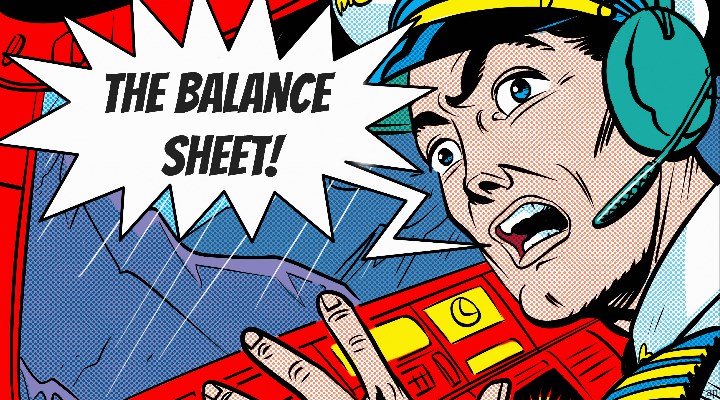
The world has gone mad. American investors expect a 17.5% annual return on average, according to a 2021 study by the global asset manager Natixis. Let that sink in. At that rate you double your money every four-and-a-bit years. For investors with a decent sized portfolio, 17.5% a year means a shot at keeping up with the Kardashians. But before you jet off to Paris for fashion week, I humbly reintroduce you to reality: 17.5% a year is not going to happen. For many investors this is not news they want to hear.
Around us is desperate talk of trend lines, oversold markets and key support levels for the S&P 500 – meaningless chatter attempting to distil the random walk of millions of individual market participants into an optimistic soundbite. The market will stop falling when the dream of 17.5% is dead, when the dream of “stocks only go up” becomes a distant memory. Markets will stop falling when madness finally capitulates.
How to Spot a Bear (Market) in the Woods
Bear markets are not pretty. The media becomes increasingly shrill as stocks near that magical negative 20% threshold. “How low could it go?” a TV reporter will ask. “In 1929 the market went down 89%” a houndstooth clad economics professor will reply from behind his spectacles. A quick calculation confirms you will indeed die at work should that happen. Family and friends will come out of the woodwork mouthing “I told you so”. Investing was a mistake, they’ll say, taking a perverse pleasure in each market drop.
Next come the well-meaning friends and colleagues you trust. They will say sensible sounding things like “the market is just a bit risky right now so it makes sense to go to cash until the market is safer”. It will be music to your ears. Sell into the fall and buy the bottom. How simple. The advice will sound so good to you because it offers a way to stop the pain. The pain of looking at a rapidly shrinking account balance. The pain of having to explain to loved ones why the nest egg is looking more quail than chicken. The pain of feeling like a failure. The advice appears to offer an out, a way to refloat a capsizing ship. A way to do something.
The million-dollar question is how to endure the demise of Bubbleville without succumbing to the fear and shame that will ultimately undermine your investing goals. I know many of you want investing recommendations, a magic stock or fund that will deliver the returns to get you out of the hole. The investment industry wants you to think this way. But salvation will not come from another overhyped product. It comes from within.
Start by acknowledging you have a bias to act. Say it with me – “My name is Mark LaMonica and I am hardwired to respond to stress with actions that weave an illusion of control over the uncontrollable.” Not all action is bad. This is a moment to go back to basics.
– Do you have a properly defined goal? If not, create one.
– Do you know how large a portfolio you need to achieve your goal? Figure it out.
– Decide when you want to reach your goal.
– Determine how much you will save towards your goal each year. This will allow you to calculate your required rate of return.
Remember perfection is the enemy of progress. Goals evolve over time. A defined goal today provides a foundation from which you can weigh the trade-offs of deciding to pursue a new career, take a break from work or adjust your savings rate.
Picking an Investing Philosophy
Investing is as much about the heart as dollars and cents. Who you are post-Bubbleville may be quite different from today. Now is the time to take a step back and think about what type of investor you want to be. Far from a hippy dippy exercise in self-discovery, this question is key to being a successful investor.
In their lust to sell you products, the investment industry omits the fact that there are many ways to be a successful investor (except day trading. If you are reading this and day trade, there is a 95% chance you will fail). But various paths to being a successful investor doesn’t mean all will suit you. Morningstar research shows the average investor underperformed the average investment return by 1.7% a year over a ten-year period. Why? Poor timing. People buy the peak and sell the dip. From tulips to Terra it has been this way. Our tendency to stupidity is why we must find an investment philosophy that works for us; a mast to tie ourselves to when the crypto sirens sing bewitching songs about instant riches.
My personal philosophy involves dividend paying, non-cyclical and low uncertainty companies. An approach so boring that when I spoke last week at the Australian Shareholder’s Association conference – hardly a bastion of Cathie Wood enthusiasts – a member chided my conservatism, saying he would never invest like me. I simply smiled, because I’m ok with boring. It suits my temperament and reflects hard lessons learnt during the .com meltdown. Yes, I’ve underperformed since Bubbleville went ballistic. Yes, I’ve done very well the last six months. But through it all I’ve stayed on track to achieve my goals – the only reason I invest.
Now is the time to dust off or discover your philosophy. For the more experienced investors reading, perhaps a few investments slipped into your portfolio that don’t align with your philosophy. Totally understandable – the siren calls of quick riches and FOMO are real. But now is a time to prune. For the new investors, now is the perfect time to define a philosophy. During the .com crash I had my world rocked by Jeremy Siegel’s Stocks for the Long Run and The Future for Investors. They inculcated in me a visceral need to reinvest dividends and compound them over decades. Like I said, boring. Your philosophy may look different. Figure it out. Write it down. Find investments to match. I suspect they are going to get cheaper as Bubbleville dies.
Mark LaMonica is Director of Product Management at Morningstar











.jpg)
















